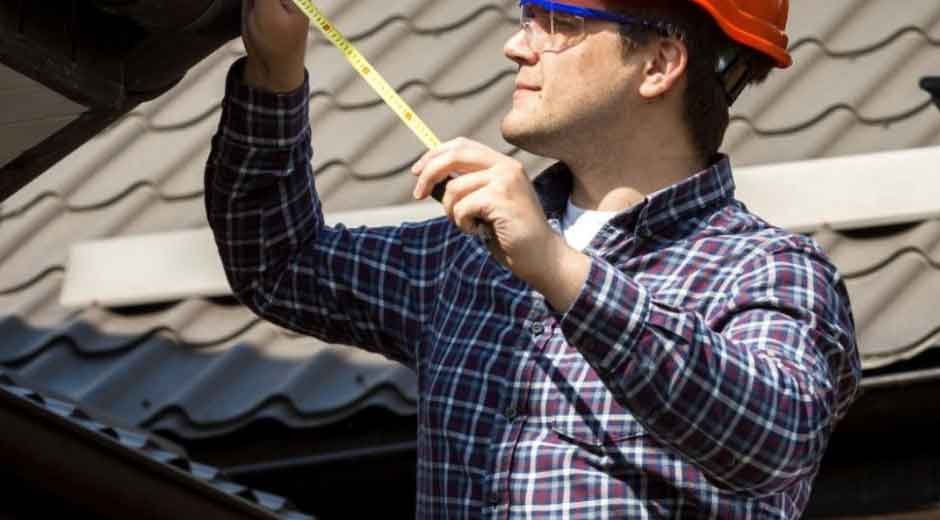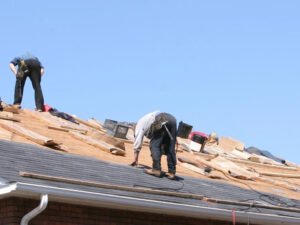Most homeowners have no idea what’s happening up on their roof until water starts dripping through the ceiling. By that point, what could have been a simple fix has turned into a expensive emergency repair. A professional roof inspection catches these problems early, but the process itself remains a mystery to most people.
Understanding what inspectors actually look for – and why these checks matter so much – helps homeowners make smarter decisions about their biggest investment. The difference between a roof that lasts 25 years versus one that fails at 15 often comes down to catching small issues before they snowball.
The Initial Assessment: More Than Just Looking Up
Professional inspectors don’t just climb up and glance around. The process starts from the ground, where they examine the overall roof structure for sagging, uneven planes, or visible damage. They’re checking how the roof sits on the house – any dips or waves in the roofline signal serious structural problems underneath.
From ground level, inspectors also scope out the surrounding environment. Trees hanging over the roof, nearby power lines, and the general condition of the property all factor into their assessment. A roof shaded by large oaks faces different challenges than one in full sun all day.
The gutters get attention during this initial walkthrough too. Inspectors look for proper attachment, standing water, and whether downspouts direct water away from the foundation. Here’s the thing – your roof and gutter system work together as one water management unit. When Superior Gutter and Roofing performs inspections, they evaluate both systems because problems in one area almost always affect the other.
What They Check on the Roof Surface
Once on the roof, inspectors start with the shingles or roofing material itself. They’re not just looking for obvious damage like missing shingles. They check for curling edges, granule loss, cracking, and areas where shingles have started to lift. Asphalt shingles lose their protective granules over time, and once enough wash away, the underlying material deteriorates fast under UV exposure.
The inspection covers every penetration point – chimneys, vent pipes, skylights, and exhaust fans. These spots are where most leaks actually start. Inspectors examine the flashing around each penetration, looking for rust, gaps, or improper installation. A lot of “roof leaks” are really flashing failures that let water sneak in around these vulnerable areas.
Valleys – where two roof planes meet – get extra scrutiny. Water concentrates in these channels, making them prone to wear and damage. Inspectors check that valley flashing is intact and properly installed, because valley failures can dump water into your attic faster than almost any other roof problem.
The Hidden Problems They Find
Professional inspectors spend time in the attic, which is where they spot issues that aren’t visible from above. They’re looking for water stains on the underside of the roof decking, which show current or past leaks. Even old stains matter because they indicate weak spots that could fail again.
Ventilation gets a thorough evaluation during attic inspection. Poor attic ventilation is a silent roof killer. Without proper airflow, heat and moisture build up, cooking shingles from underneath and promoting rot in the roof deck. Inspectors check soffit vents, ridge vents, and attic fans to ensure adequate air circulation.
They also examine the condition of the roof decking itself. Sagging, soft spots, or deterioration in the plywood or boards that support your shingles mean structural repairs are needed. Most people don’t see this coming – the shingles might look fine from outside while the deck underneath is rotting away.
Understanding the Detailed Report
After the inspection, you’ll receive a detailed report with photos and findings. Good inspectors categorize issues by urgency – immediate concerns, things to monitor, and maintenance recommendations. This helps homeowners prioritize repairs and budget accordingly.
The report typically includes an estimated remaining lifespan for your roof based on current condition. This isn’t just guesswork. Inspectors consider material type, installation quality, visible wear, maintenance history, and environmental factors. A 15-year-old roof might have another decade of life, or it might need replacement within two years depending on these factors.
Photographs document everything the inspector found. These images prove invaluable when dealing with insurance claims after storm damage or when getting quotes from contractors. They also provide a baseline to compare against future inspections.
Why Regular Inspections Actually Save Money
The math on roof inspections is straightforward. A professional inspection costs a few hundred dollars. Replacing rotted roof decking adds thousands to a roofing job. Finding a small leak early might mean a $300 repair. Discovering that same leak after it’s damaged insulation, drywall, and framing can easily hit $5,000 or more.
Insurance companies often deny claims for damage that resulted from poor maintenance. Regular inspection reports prove you’ve been responsible about upkeep. Some insurers even offer discounts for homes with recent inspection records.
Most roofing professionals recommend inspections every 3-5 years for newer roofs, and annually for roofs over 15 years old. After major storms, getting an inspection makes sense regardless of your roof’s age. Hail and wind damage isn’t always obvious, but it shortens roof life significantly if left unaddressed.
What to Do With Inspection Results
Not every issue requires immediate action. Minor granule loss on a 10-year-old roof is normal. A couple of damaged shingles can wait until spring. The key is understanding which problems actually threaten your home and which are just part of normal aging.
When inspectors recommend repairs, getting multiple quotes makes sense. But don’t automatically choose the cheapest option. Quality materials and proper installation techniques cost more upfront but last longer. A cheap repair that fails in two years ends up costing more than doing it right the first time.
Some inspection findings point to ongoing maintenance needs rather than repairs. Keeping gutters clean, trimming overhanging branches, and ensuring proper attic ventilation are homeowner responsibilities that protect your roof investment between professional inspections.
The Bottom Line on Roof Inspections
Professional roof inspections reveal problems before they become disasters. They help homeowners plan for major expenses instead of facing emergency repairs at the worst possible time. The inspection process itself – from ground-level assessment through detailed reporting – provides a complete picture of your roof’s health and remaining service life.
Skipping inspections might seem like saving money, but it’s actually gambling with one of your home’s most critical systems. The cost of an inspection is minimal compared to the thousands you’ll spend fixing preventable damage. Regular professional assessments keep roofs performing longer and give homeowners peace of mind that their home is protected from the elements.










